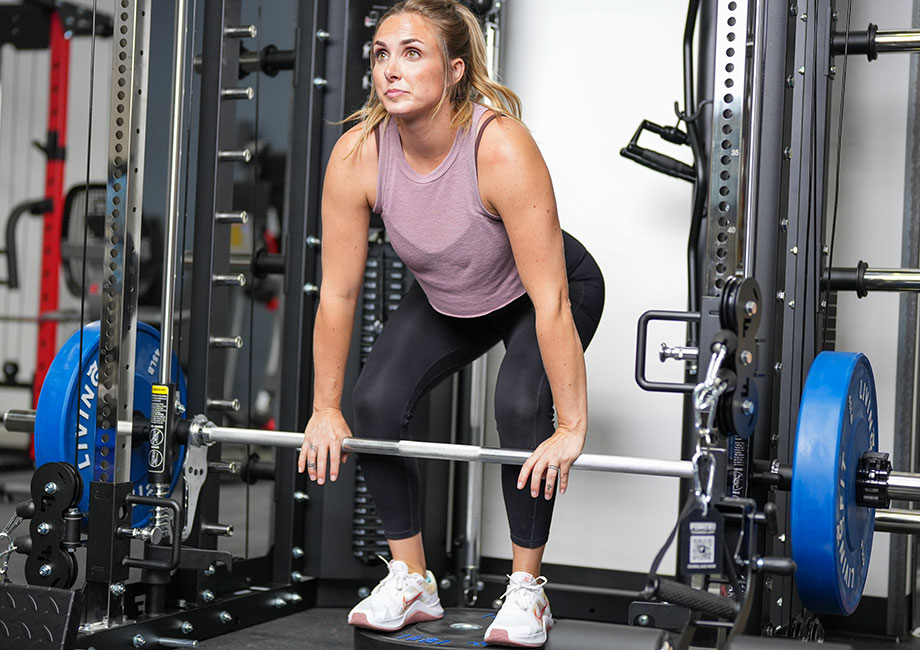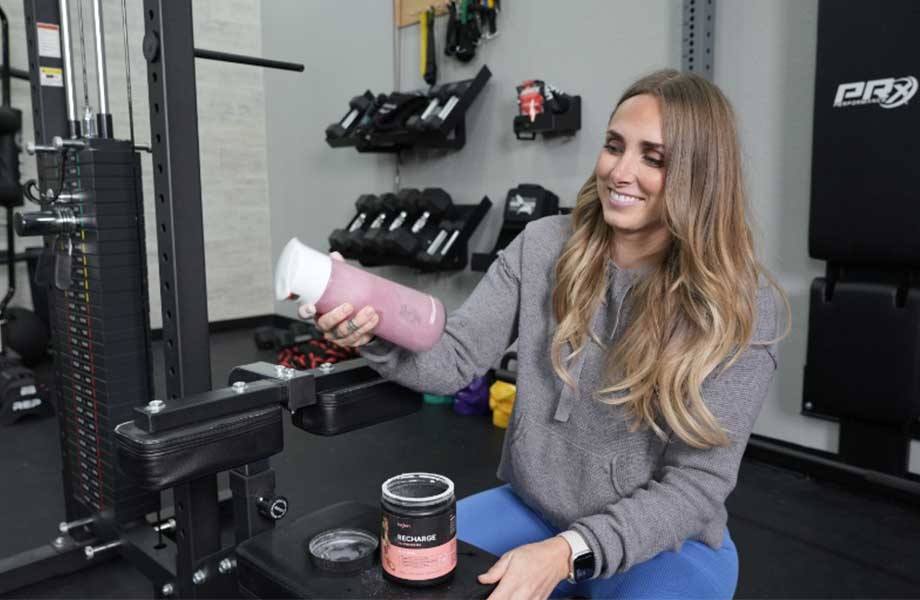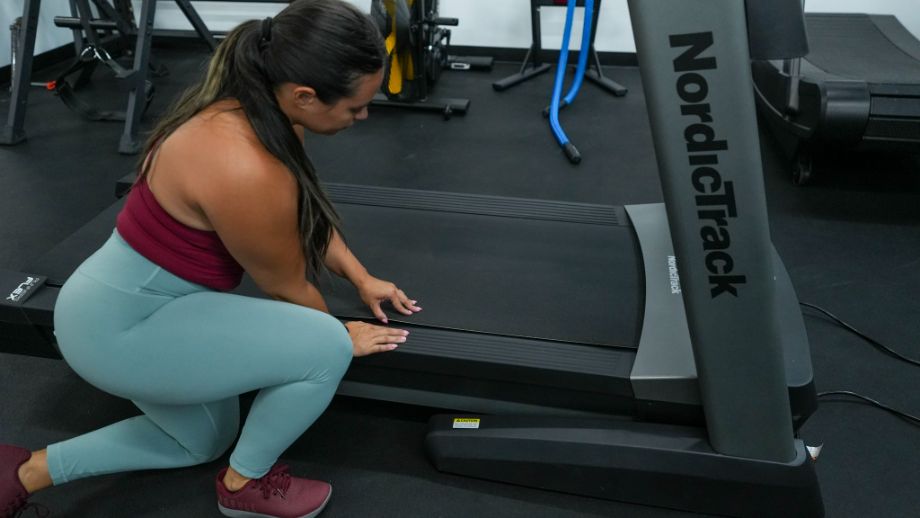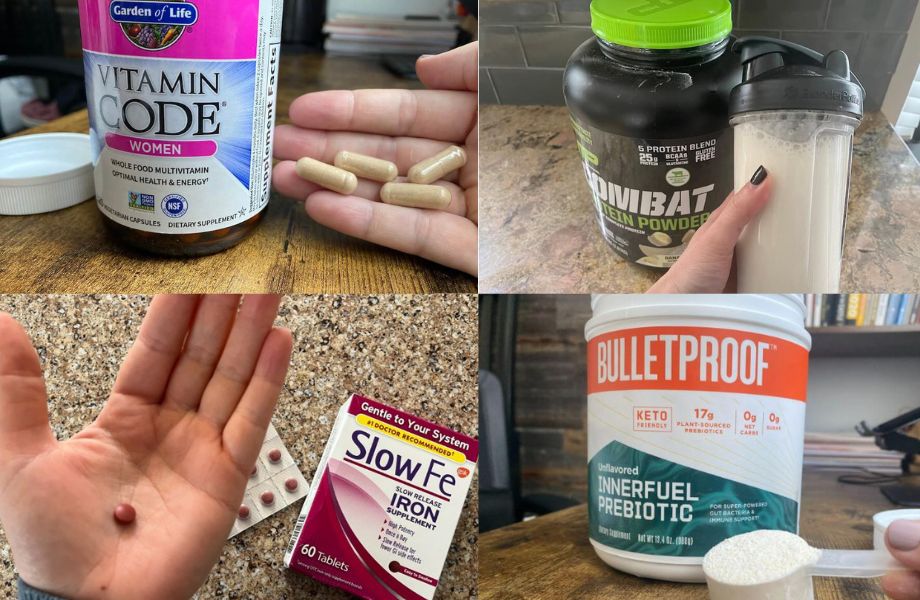Working out is tough enough already. There’s the hurdle of deciphering the best and worst fitness trends, new exercises and methods, and every other day, Instagram decides to throw a fitness influencer on your feed that makes you question all your training. There’s a reason why lifters of all fitness levels, especially bodybuilders, powerlifters, and weightlifters, depend on tried-and-true training splits to reach their specific goals.
RELATED: Workout Schedule for Beginners
Allow me to dish-out my guidance as a certified strength and conditioning specialist (CSCS) on the best ways to split up your training program, provide a few examples of strength training workouts to get you started, and provide you with some clarity for the next time you hit the gym or crush your workout at home.
I’ll dive into the three traditional workout splits: full-body, upper/lower body, and push-pull, offer some modifications, and explain the key benefits of exercise splits overall. Read on!
RELATED: Program Your Own Workouts
What is a Workout Split?
A workout split refers to how a lifter divides up their training, usually by lift or muscle groups. There are three workout splits that I’ve used in my years of coaching when programming for athletes and clients.
- Full-Body Split
- Upper-Lower Split
- Push-Pull Workout Split
You can’t go wrong with using any of these training splits when starting to craft your workout routine—though one may be more beneficial than the other based on your individual needs and goals.
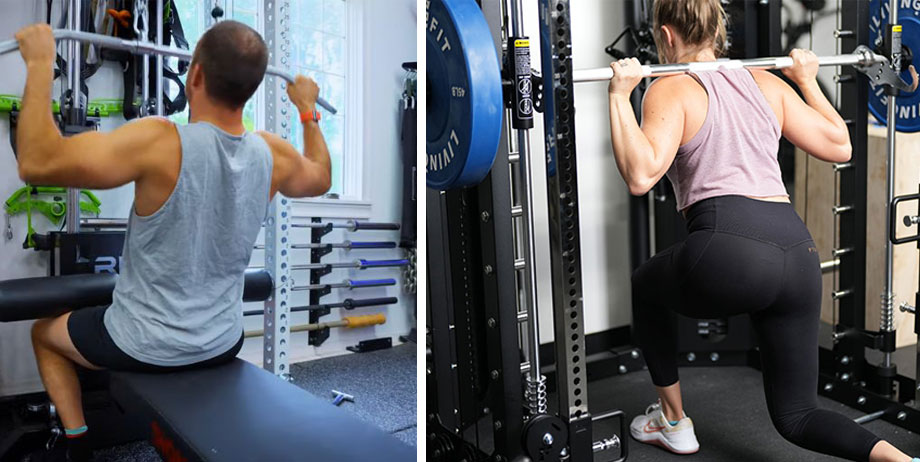
RELATED: Full-Body Barbell Workout
Best Workout Splits
Step one is complete: you’ve made it to the gym. Now, it’s time to figure out step two: what exercises will you choose, and how will you plug them into your workouts?
Answer step two by checking out the best workout splits below. These splits are battle-tested with years and years of use and are sure to push you toward your fitness goals.
I’ll guide you through how to program each split and toss in a few examples to add to your workout routine!
Full-Body Workout Split
A full-body split focuses on training all major muscle groups in one session. For my recommended full-body split, you’ll have a circuit consisting of an upper-body push, upper-body pull, lower-body push, lower-body pull, and core exercise each day. It’s best to stick with two to three training sessions per week to avoid excessive fatigue and use different exercises for each day to vary your movement patterns.
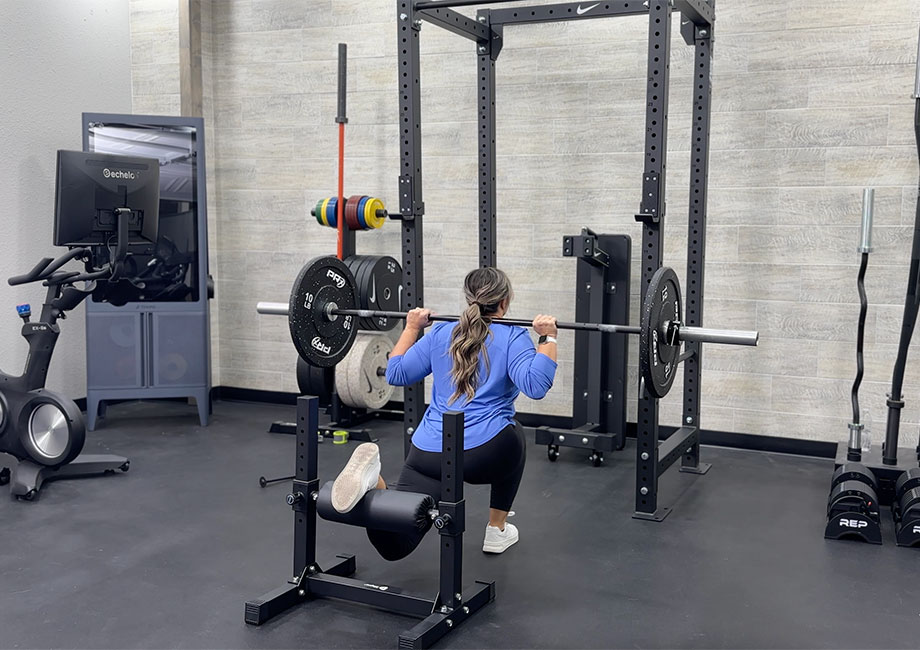
Here’s an example of a full-body workout split:
| Exercise | Type | Sets | Reps |
| Split Squat | Lower Push | 3 to 4 | 8 to 12 |
| Push-Up | Upper Push | 3 to 4 | 8 to 12 |
| Glute Bridge | Lower Pull | 3 to 4 | 8 to 12 |
| Single-Arm Row | Upper Pull | 3 to 4 | 8 to 12 |
| Plank | Core | 3 to 4 | 8 to 12 |
Note(s): Complete three to four rounds of the circuit. Rest two to three minutes between each round.
RELATED: How to Do Split Squats
Upper-Lower Body Workout Split
Divide and conquer….your workouts! This upper-lower body workout split will have you divide your sessions, emphasizing upper and lower body splits. Using upper-lower splits allows you to train with more intensity and volume due to the increased recovery time between workouts—a common theme amongst the best workout splits.
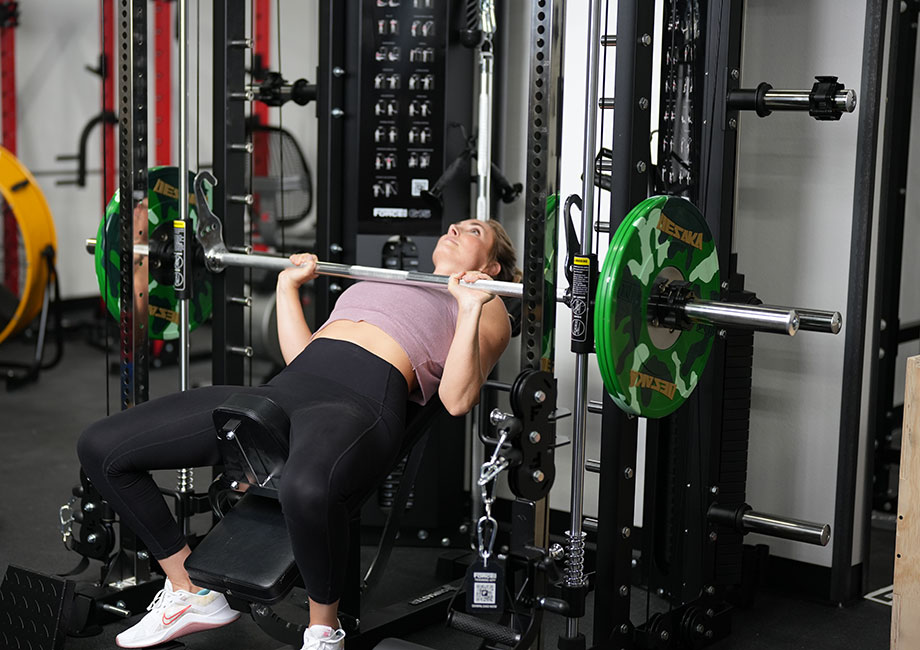
The best practice here is to alternate between workouts throughout the week, allowing your muscles to rest and recover.
Here’s my go-to Upper-Body workout split:
| Exercise | Sets | Reps |
| Barbell Bench Press | 4 to 5 | 6 to 8 |
| Dumbbell Bent-Over Row | 2 to 3 | 8 to 12, per side |
| Dumbbell Overhead Press | 2 to 3 | 8 to 12 |
| Barbell Biceps Curl | 2 to 3 | 12 to 15 |
| V-Up | 2 to 3 | 10 to 15 |
Lower-Body workout split:
| Exercise | Sets | Reps |
| Barbell Deadlift | 3 to 4 | 6 to 8 |
| Dumbbell Step-Up | 3 to 4 | 6 to 8, per side |
| Seated Leg Curl | 3 to 4 | 12 to 15 |
| Seated Leg Extension | 3 to 4 | 12 to 15 |
| Side Plank | 2 to 3 | 15 to 30 sec. hold, per side |
Push-Pull Workout Split
The first variation of a push-pull split will separate your days by pairing movement patterns. I look to program this type of split when an athlete or client only has four to five days to train, allowing them to push their workouts but still have ample time to recover between sessions.
You’ll want to lay out the workout plan as follows, starting day one with the movement that needs the most improvement (for example: targeting squat strength for a phase will have you start with lower-body-push + upper-body-pull for day one.)
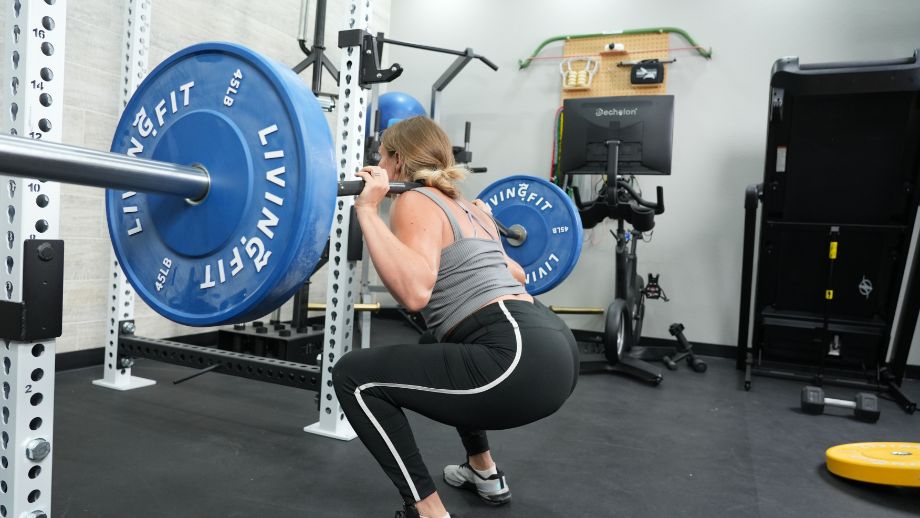
If your deadlift, bench, or shoulder press needs more attention, start day one with an upper-body-push + lower-body-pull workout.
Lower-body-push + Upper-body-pull focus:
- Day 1 – Lower-body-push + Upper-body-pull
- Day 2 – Upper-body-push + Lower-body-pull
- Day 3 – Rest
- Day 4 – Upper-body-pull + Lower-body-push
- Day 5 – Lower-body-pull + Upper-body-push
- Day 6 – Rest OR Lower-body-push + Upper-body-pull
- Day 7 – Rest
Upper-body-push + Lower-body-pull focus:
- Day 1 – Upper-body-push + Lower-body-pull
- Day 2 – Lower-body-push + Upper-body-pull
- Day 3 – Rest
- Day 4 – Lower-body-pull + Upper-body-push
- Day 5 – Upper-body-pull + Lower-body-push
- Day 6 – Rest OR Upper-body-push + Lower-body-pull
- Day 7 – Rest
Lower-Push + Upper-Pull Workout:
| Exercise | Type | Sets | Reps |
| A1. Barbell Back Squat | Lower Push | 3 | 5 to 8 |
| A2. Pull-Up | Upper Pull | 3 | 5 to 8 |
| B1. Dumbbell Reverse Lunge | Lower Push | 3 | 8 to 12, per side |
| B2. Dumbbell Bent-Over Row | Upper Pull | 3 | 8 to 12 |
| C1. Hollow Hold | Core | 3 | 30 to 45 sec. hold |
Note(s): Letters (i.e. A1., A2.) indicate a superset. Perform one set of barbell back squats, immediately followed by one set of pull-ups. That equals one set. Repeat for three total sets.
Upper-Push + Lower-Pull Workout:
| Exercise | Type | Sets | Reps |
| A1. Dumbbell Incline Bench Press | Upper Push | 3 | 8 to 12 |
| A2. Barbell Romanian Deadlift | Lower Pull | 3 | 8 to 12 |
| B1. Dumbbell Overhead Press | Upper Push | 3 | 12 to 15 |
| B2. Dumbbell Glute Bridge | Lower Pull | 3 | 12 to 15 |
| C1. Half Kneeling Pallof Press | Core | 2 | 15 to 20 each |
Note(s): Letters (i.e. A1., A2.) indicate a superset. Perform one set of dumbbell incline bench presses, immediately followed by one set of barbell Romanian deadlifts. That equals one set. Repeat for three total sets.
Push-Pull-Legs
Keep this between you and me, but this is hands-down my FAVORITE of the workout splits. Whether you’re training to increase strength, muscle size, or adding resistance training to your weight-loss routine, this split has got your back—literally.
The push-pull-legs split allows you to squeeze every last bit of effort into each rep. After you crush your push workout—targeting your chest, delts, and triceps on day one, you’ll have three full days before you attack the same muscles in the gym. This method favors increased training volume per day, allows optimal recovery—especially for those larger muscle groups, and is still very time efficient.
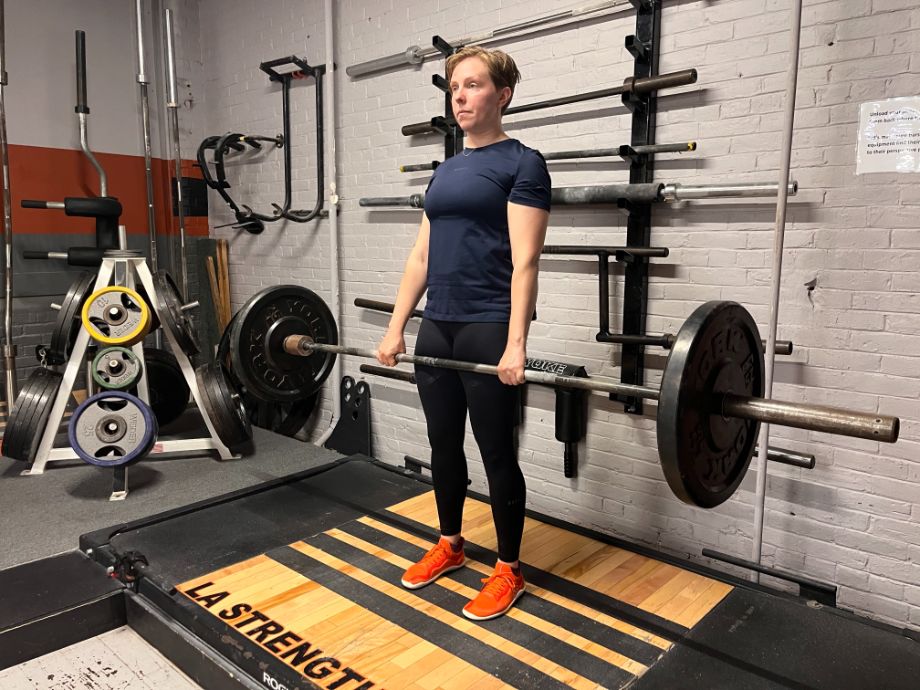
Check out the workout schedule and sample program below!
Coach’s note: If you’re unable to consistently train six days per week, I’d recommend the upper-lower workout split or the push-pull workout split.
Push-Pull-Legs Weekly Schedule:
- Day 1 – Push
Bench Press: 3-4 sets of 6-8 reps
Seated Dumbbell Overhead Press: 3-4 sets of 8-12 reps
Dumbbell Skull Crusher: 3 sets of 12-15 reps
Dumbbell Lateral Raise: 3 sets of 12-15 reps
- Day 2 – Pull
Deadlift: 3-4 sets of 5-8 reps
Chin-up: 3-4 sets of 5+ (to failure)
Lat Pulldown: 3 sets of 12-15 reps
Dumbbell Row: 3 sets of 12-15 reps, per side
- Day 3 – Legs
Barbell Back Squat: 3-4 sets of 5-8 reps
Barbell Glute Bridge: 3-4 sets of 8-12 reps
Walking Lunge: 3 sets of 12-15 reps, per side
Seated Leg Curl: 3 sets of 12-15 reps
- Day 4 – Rest
- Day 5 – Push
Barbell Overhead Press: 3-4 sets of 8-12 reps
Incline Dumbbell Bench Press: 3-4 sets of 8-12 reps
Dips: 3 sets of 8+ (to failure)
Cable Triceps Pushdown: 2 sets of 12-15 reps
- Day 6 – Pull
Barbell Bent-Over Row: 3-4 sets of 5-8 reps
Stiff-Legged Deadlift: 3-4 sets of 5-8 reps
Single-Arm Lat Pulldown: 3 sets of 12-15 reps, per side
Dumbbell Hammer Curl: 3 sets of 12-15 reps
- Day 7 – Legs
Barbell RDL: 3-4 sets of 6-8 reps
Dumbbell Split Squat: 3-4 sets of 8-12 reps, per side
Lateral Lunge: 3 sets of 8-12 reps
Seated Leg Extension: 3 sets of 12-15 reps
How to Modify Workout Splits
Having a dedicated training plan is great, but what should you do when you’re brand new to training, rehabbing an injury, the gym is busy, equipment isn’t available, or your workouts have become stale?
Check out these audible calls for modifying your workout splits:
Space and Time
In a perfect training world, you’d have all the space and time to work out. Unfortunately, that’ll never happen. When your workouts are thrown a wrench, having a backup plan is crucial for your success.
Let’s say you pop into the gym for the leg day workout of your push-pull-legs split, and all of the squat racks are busy. Chances are you don’t have the time to wait and see if one opens up soon. Substituting other squat variations like goblet squats, lunges, or step-ups is an excellent adjustment and will still get your quads burning.
My expert advice: try to group exercises using similar movement patterns or equipment, and don’t hesitate to do dumbbell variations if the barbells are unavailable. Be creative.
New Exercises and Routines
Doing the same routine can become boring and hinder your motivation. Switching up your workout splits and exercises can bring a fresh perspective to your training routine.
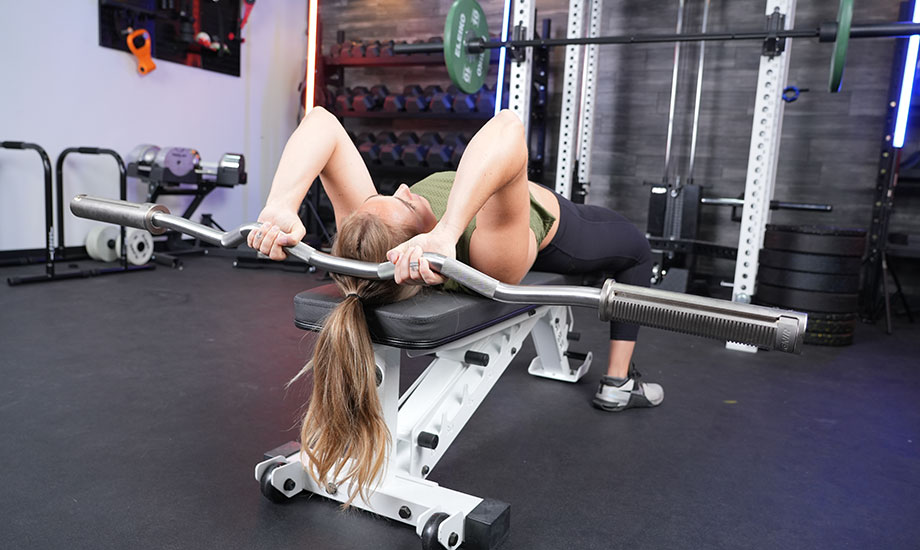
Here are a few suggestions:
- Change your exercises every four to six weeks.
- Change up your workout splits. If you followed a push-pull split for four weeks, try following an upper-lower split for the next four
- Switch up your weekly workout order. Flip-flop your upper and lower workout days.
- Reassess your goals. If you’ve been focused on gaining muscle over the last few months, now might be the time to focus on strength.
Benefits of Workout Splits
Crafting a programmed workout split eliminates half the guesswork in the gym, shifting your focus solely on training. Here are a few more benefits of incorporating splits into your exercise program.
Time-Efficient Workouts
Workout splits are an excellent option for improving time efficiency and training consistency. In fact, a 2015 study in the Journal of Sports Medicine and Physical Fitness1 states, “exercise programs that are less time-consuming may be of great value to increase physical activity adherence.”
By dividing the training routine across the week, you hone in on specific muscle groups without spending excessive time in a single session. This makes it easier to manage time commitments, whether working out at home or in the gym, while maintaining a consistent exercise routine—one of the biggest hurdles of reaching your fitness goals.
Train with Higher Volume
Training with higher volume is a benefit of workout splits that’ll help push you closer to your training goals. By dividing muscle groups into different days, you can incorporate more exercises and volume (sets and reps), thus targeting a particular area.
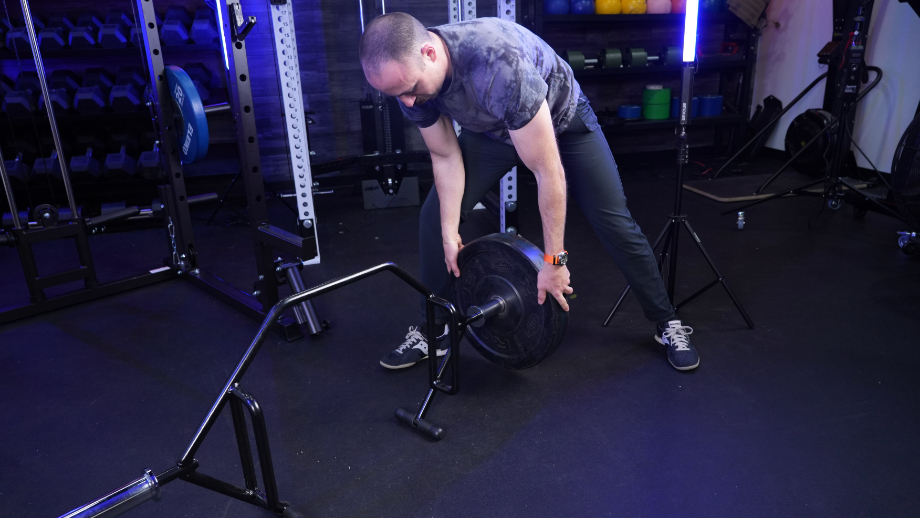
A November 2018 study from the Journal of Sports Sciences2 concluded that the primary factor influencing muscle building revolves around total training volume, further reinforcing that workout splits are a great option to increase your overall workload and challenge muscles with varied movements—leading to improvements in muscle size, strength, and endurance.
Improved Muscle Growth and Recovery
In a July 2019 study in the Journal of Strength and Conditioning Research3, researchers found that a split routine induced higher levels of muscular hypertrophy compared to non-split training routines. By targeting specific days for different muscle groups, individuals provide adequate time for each area to recover between sessions.
Additionally, focusing on particular muscle groups during each session enables individuals to work with greater intensity, stimulating more muscle growth, strength gains, and overall performance. However, this will require you to have longer recovery time between workouts, according to the National Academy of Sports Medicine4.
Ultimately, workout splits facilitate a balance between workload and recovery, establishing optimal conditions for muscle development and improving the body’s ability to overcome and adapt to stress5.
Workout Splits: Final Thoughts
Laying out your training plan with one of the best workout splits will ensure you are progressing toward your goals and targeting each muscle in the body.
- Craft your workout plan with the split that works best for you, considering the time you have to train, available equipment, and your fitness goals.
- Vary the movements in your splits often, typically every four to six weeks – this helps keep your workouts fresh and fun.
- Don’t be afraid to modify your workouts when necessary.
- Workout splits offer a variety of benefits: time efficiency, the ability to train with more sets and reps (volume), and they enhance muscle growth and recovery.
Here’s a quick pros and cons list to help you decipher which split might be best for you:
| Type of Split | Preferred # of Workouts per Week | Pros | Cons |
| Full-body Split | 3 | Ideal for busy schedulesTrain all muscle groups each workout | Less training frequency |
| Upper-Lower Split | 4-5 | Time-efficient workoutsOptimal recovery | Less training frequency for muscle groups |
| Push-Pull Split | 4-5 | Ideal for supersetsTime-efficient workouts | Not ideal for best recovery |
| Push-Pull-Legs | 6 | Time-efficient workoutsIncreased training volume per sessionOptimal recovery | Not ideal for busy schedules |
Workout Splits: FAQs
What is the most effective workout split?
The most effective workout split is the one that works for you—no matter your training experience. If you have two to three training days per week, I recommend a full-body training split. If you have four or more training days per week, focus on upper-lower body splits or push-pull splits.
Start with compound exercises and follow up with unilateral isolation exercises to best build muscle. As always, train smart, recover well, eat nutritious meals, and stay hydrated to get the most out of your workout program.
What is the best 5-day workout split?
Check out my CSCS-certified 5-day split, great for beginner to advanced lifters, to help achieve those muscle gains in the gym:
Monday – Lower Body
Tuesday – Upper Body
Wednesday – Lower Body
Thursday – Upper Body
Friday – Active rest or Cardio
Saturday – Full Body
Sunday – Rest
When structuring lower-body workouts, consider alternating between lower-body push exercises such as squats and lunges, which primarily engage your quadriceps, and lower-body pull exercises like deadlifts and glute bridges, focusing on your hamstrings and glutes.
For upper-body workouts, it’s good practice to alternate between upper body pressing movements like bench press, push-ups, and overhead press, targeting your chest, shoulders, and triceps, and upper-body pulling movements such as pull-ups and rows to target your lats and back muscles.
RELATED: Upper-Body Workout at Home
Is it OK to split your workout throughout the day?
If your schedule allows it, definitely. This concept isn’t as foreign as you may think, and it could lead to better progress6 based on the individual. A great starting point is to take your traditional routine and make an AM and PM workout and split it.
For example, let’s say your workout is squats, pull-ups, deadlifts, and push-ups. For your AM session, knock out your squats and pull-ups. In the PM, do your deadlift and push-ups. If you venture into twice-a-day workouts, focus on using a few of the best warmup exercises, and recover well with mobility, nutrition, and hydration—especially between sessions.
References
- Gentil P, Fischer B, Martorelli AS, Lima RM, Bottaro M. Effects of equal-volume resistance training performed one or two times a week in upper body muscle size and strength of untrained young men. J Sports Med Phys Fitness. 2015;55(3):144-9.
- Schoenfeld BJ, Grgic J, Krieger J. How many times per week should a muscle be trained to maximize muscle hypertrophy? A systematic review and meta-analysis of studies examining the effects of resistance training frequency. J Sports Sci. 2019;37(11):1286-1295. doi:10.1080/02640414.2018.1555906
- Zaroni RS, Brigatto FA, Schoenfeld BJ, et al. High Resistance-Training Frequency Enhances Muscle Thickness in Resistance-Trained Men. J Strength Cond Res. 2019;33 Suppl 1:S140-S151. doi:10.1519/JSC.0000000000002643
- Comana, Fabia. Exploring the Science of Muscle Recovery. American Fitness Magazine. National Academy of Sports Medicine (NASM).
- Bishop PA, Jones E, Woods AK. Recovery from training: a brief review: brief review. J Strength Cond Res. 2008;22(3):1015-1024. doi:10.1519/JSC.0b013e31816eb518
- Corrêa DA, Brigatto FA, Braz TV, et al. Twice-daily sessions result in a greater muscle strength and a similar muscle hypertrophy compared to once-daily session in resistance-trained men. J Sports Med Phys Fitness. 2022;62(3):324-336. doi:10.23736/S0022-4707.21.12118-8


